Mira Study: How Sex Hormones Affect Mood & Well-being
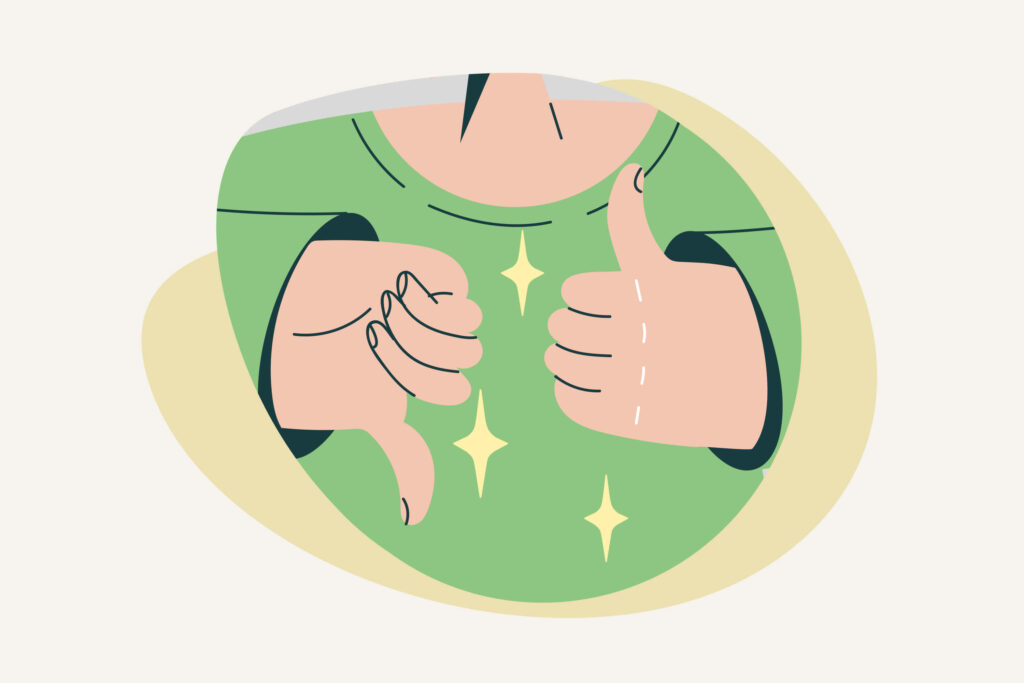
Many women know (or at least have been told by someone) that hormones play a huge role in their health.
And that’s true. Hormones affect everything from blood sugar to blood pressure, growth and fertility, sex drive, metabolism, and even sleep. Their influence goes as far as changing the way we think and act day to day.
A recent Mira survey revealed that 46% of American women attribute changes in mood and physical symptoms to hormones.
But when it comes to understanding what that specific role is, most are left scratching their heads. Another Mira survey says that 1 in 3 women know nothing about their hormones.

A little extra support from an expert can go a long way
Book an online consultation with one of our Hormone Health Coaches.
Schedule NowTo help shed some light on this topic, we conducted a study to explore the different ways that reproductive hormones can impact an individual’s mood and well-being throughout the menstrual cycle.
About the Study
For the study, Mira recruited over 150 women between the ages of 18-45 (excluding those who were on hormonal birth control or hormone replacement therapy).
Participants used the at-home Mira hormone monitor to test the following reproductive hormones in urine:
- Luteinizing hormone (LH)
- Estrone Glucuronide (E3G) – the urine metabolite of estradiol
- Pregnanediol Glucuronide (PdG) – the urine metabolite of progesterone
Participants began testing their urinary hormones from the first day after their period and continued testing for three consecutive menstrual cycles. Participants were also required to log well-being data on a daily basis using the Mira App.
The following aspects of well-being were evaluated:
- Daily mood
- Sex drive
- Productivity at work
- Food cravings
- Physical activity
- Physical appearance (i.e. self-perception)
A total of 78 participants aged 26-45 completed the study, with 48 participants finishing the exit survey. Here are the insights we found.
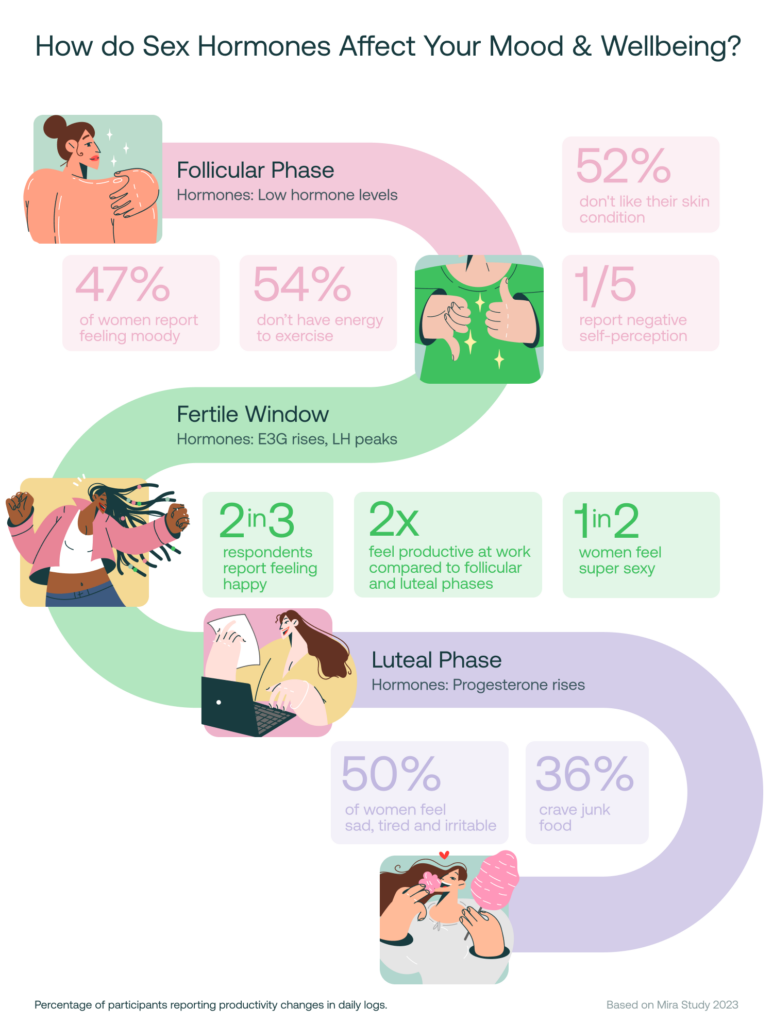
Key Insights: How Sex Hormones Affect…
Mood
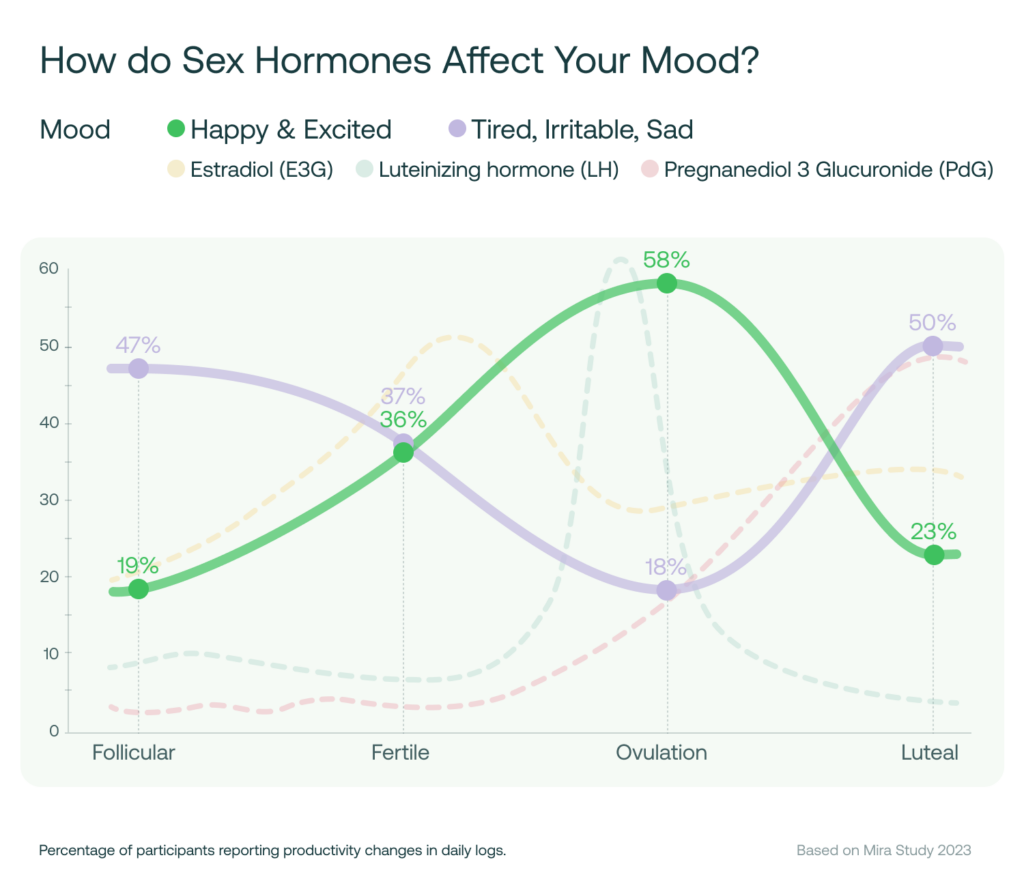
Follicular Phase: In the days following menstruation (during the follicular phase), just 1 in 5 participants (19%) reported that they felt in a good mood. This is when progesterone, estrogen, and LH levels are at their lowest.
Fertile Window: As estrogen levels increase (leading to the start of the fertile window), the number of participants who reported feeling ‘happy & excited’ doubled.

Ovulation: When LH levels reach their peak (triggering ovulation), 58% of participants reported feelings of happiness; with just 18% of participants reporting that they felt in a ‘bad’ mood.

Luteal Phase: Following ovulation, 50% of participants reported feelings of tiredness, irritability, and sadness. This coincides with the increase in progesterone levels during the luteal phase.
Sex Drive
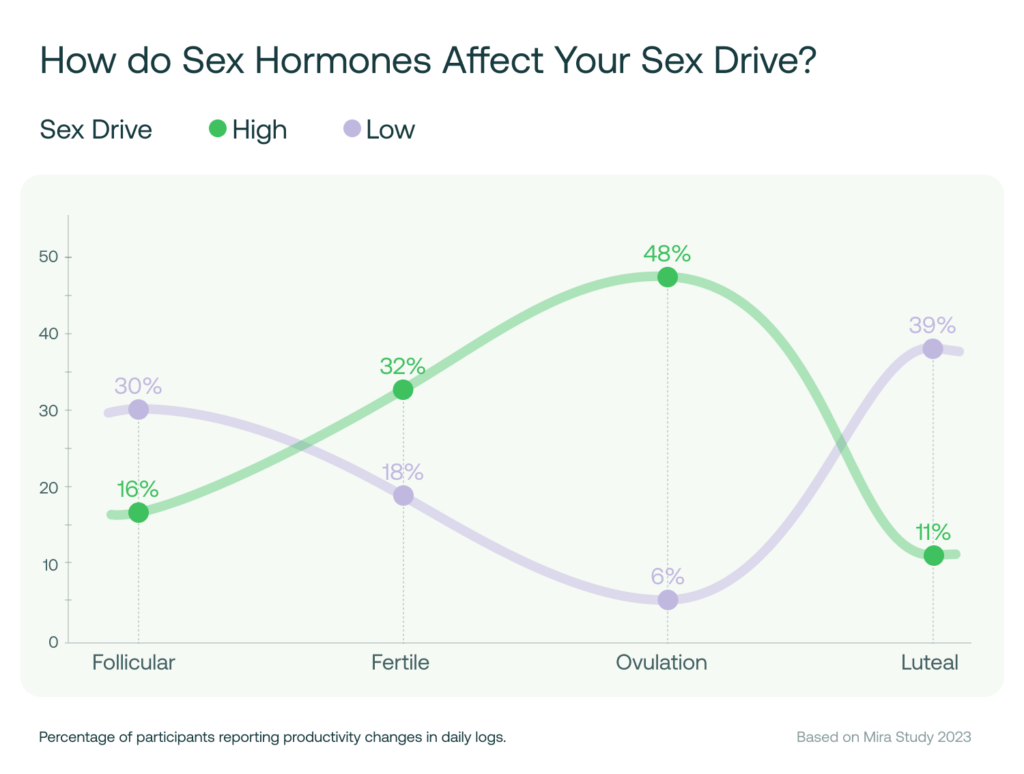
Fertile Window vs. Follicular Phase: When estrogen levels rise at the start of the fertile window, twice more participants (32%) reported an increased sex drive compared to the post-menstrual follicular phase of the cycle (16%).

Ovulation: During ovulation (marked by a peak in LH), every 1 in 2 participants reported feeling ‘super sexy’, with only 6% of participants reporting that they experienced ‘no sex drive’.
Luteal Phase: As progesterone levels increased during the luteal phase, only 11% of participants reported having a high sex drive (the lowest percentage recorded during the cycle).
Productivity
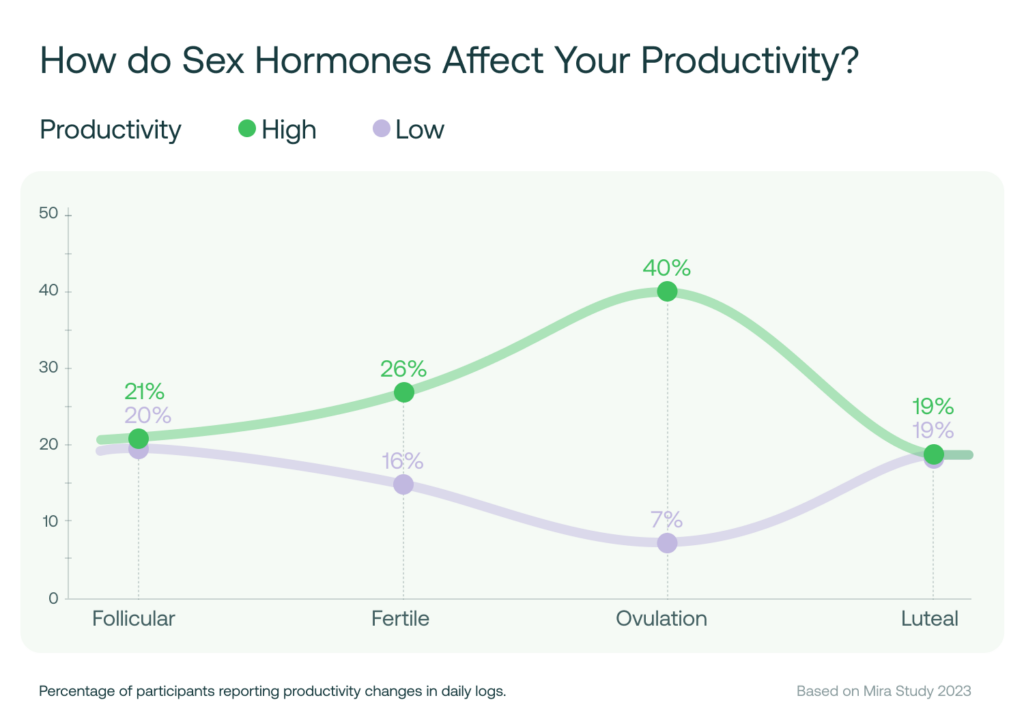
Ovulation: During ovulation, twice more participants reported feeling productive at work compared to the early follicular and luteal stages of the cycle.

Follicular Phase: Over half of the participants had a negative perception of exercise during the post-menstrual follicular phase. Based on this study, the early follicular phase is the least “active” and “productive” stage for many women.
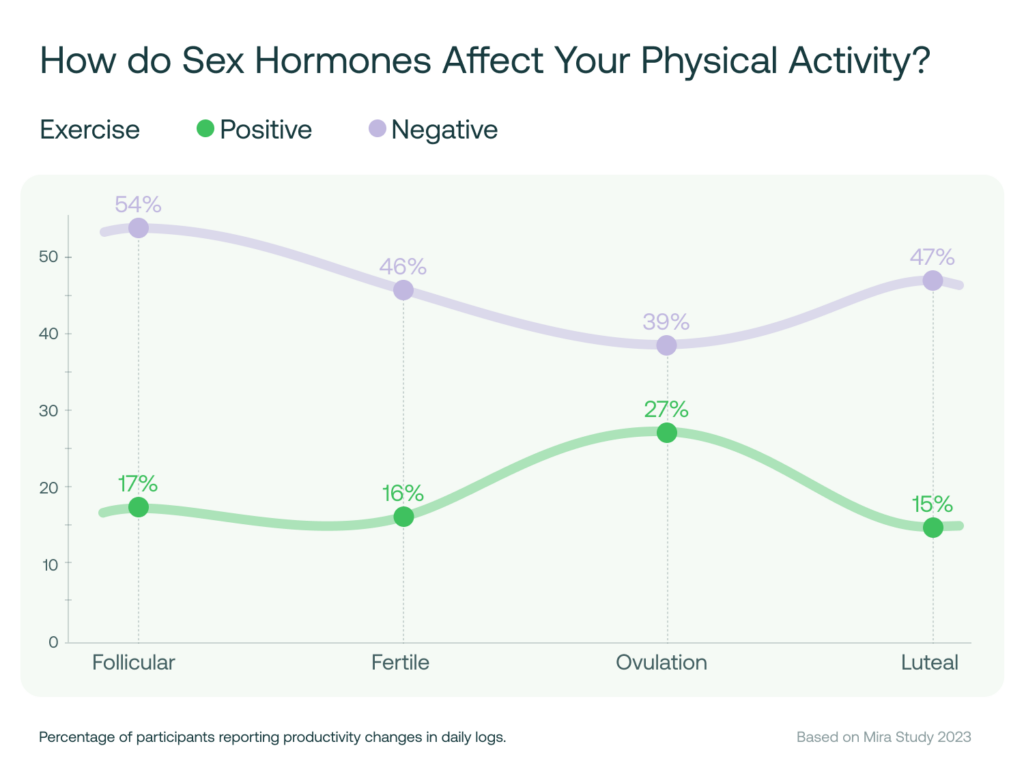
Food Cravings
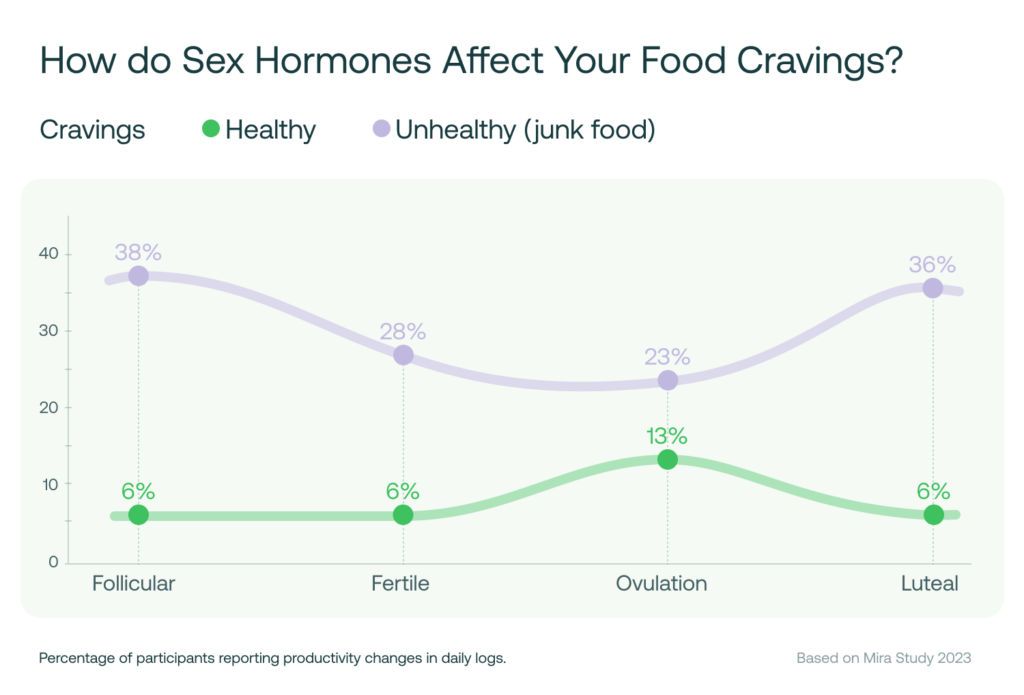
Follicular Phase: Reports of unhealthy food cravings were at their highest during the post-menstrual follicular phase.

Fertile Window & Ovulation: Fewer participants logged junk food cravings around their fertile window, with healthy food cravings twice as high (13%) during ovulation. For many women, this means it’s naturally easier to eat healthier during the fertile window.
Self-perception
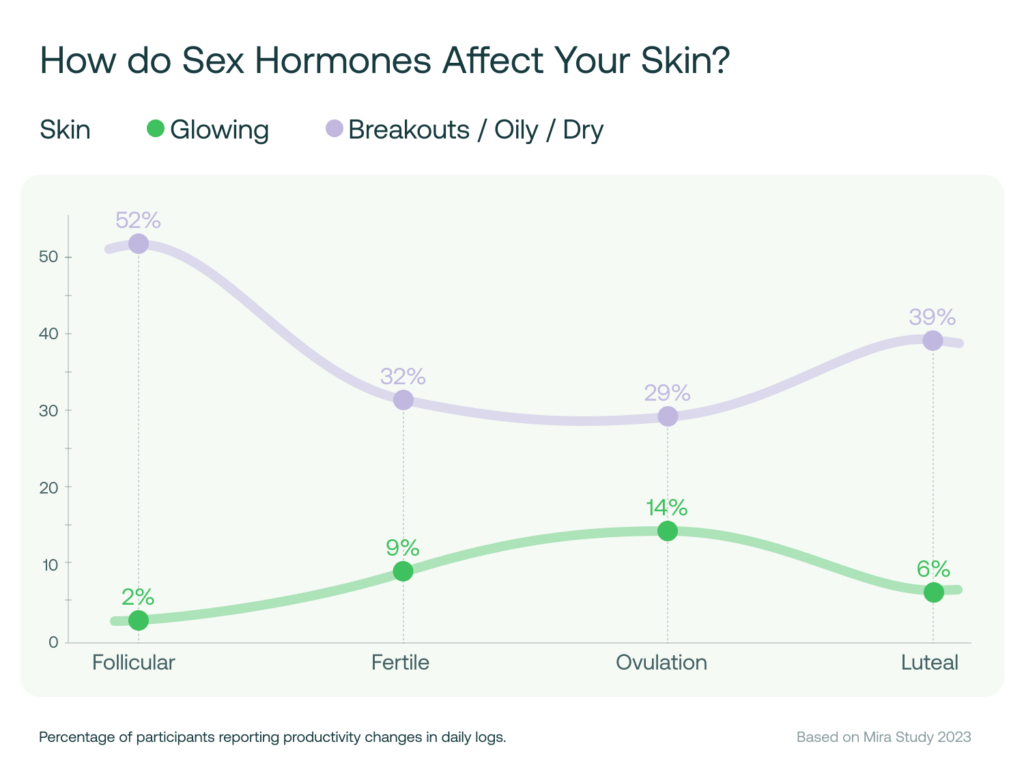
Fertile Window: When Estrogen and LH levels rise around the fertile window and ovulation, significantly more participants felt ‘good’ about their looks. The number of participants who logged that they have ‘glowing’ skin significantly increased around this time, especially during the surge in LH.

Ovulation Day: Interestingly, on the day of ovulation, just 4% of all participants reported that they did not like how they looked in the mirror. The rest (96%) reported that they liked themselves or at least felt ‘neutral’.
Follicular Phase: Self-acceptance tends to be lower during the follicular phase, with 1 in 5 participants reporting that they do not like themselves during this period. One reason for this could be the impact that sex hormones can have on the skin. For example, over half of participants (52%) shared that their skin is in the ‘worst’ condition during the early follicular phase, and only 2% reported ‘liking’ their skin during this phase.
Sex Hormone Monitoring: What You Can Learn About Your Own Mood Patterns
Although patterns exist, it’s important to remember that every individual and cycle is unique.
Over 90,000 people have already chosen the Mira Monitor to:
- Test their numeric sex hormone levels on daily base
- Understand how these hormones fluctuate throughout their cycle
- Reach their fertility goals (like getting pregnant or predict how far they are from menopause)
The Mira AI analyzes the fluctuations in fertility hormones across multiple cycles, learning consistently on the anonymized hormonal data of real users. AI has already been trained on over 10 million hormonal data points of over 780,000+ menstrual cycles and counting! Can you imagine?
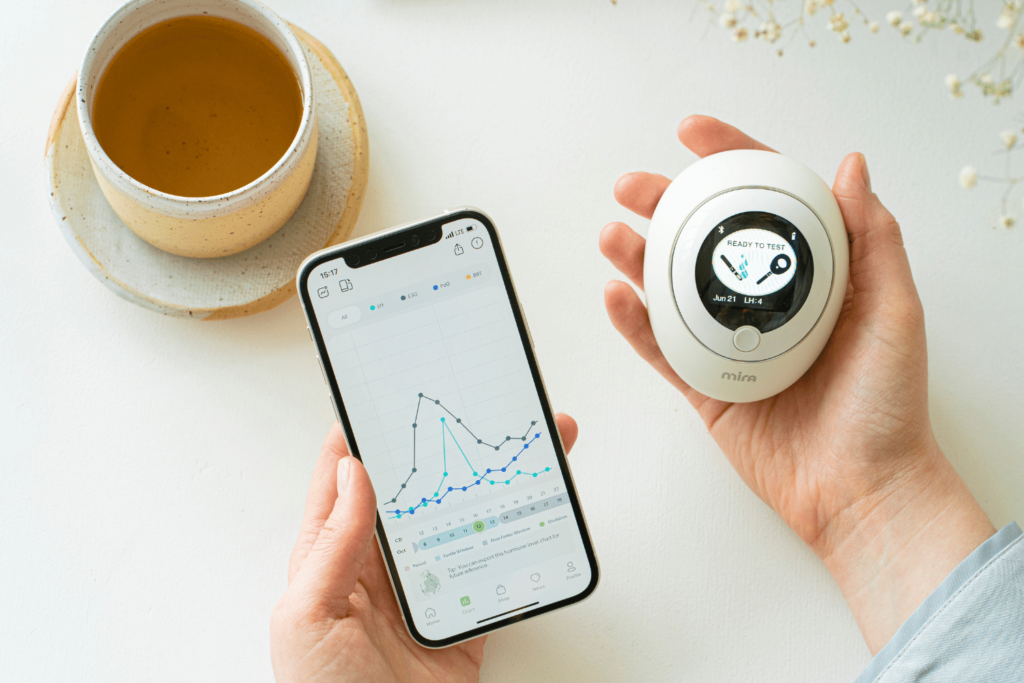
If you are curious how the cycle discovery journey with Mira may look like for an individual, meet Vinisha Rumph, our Sex Hormones Tester.
In her cycle-long vlog, she shared glimpses into her life as she learned important lessons about her body and the relationship between her hormones and well-being.
By making hormone monitoring an essential part of her health routine, Vinisha could see her own personal hormone fluctuations and gauge the impact this had on things like her mood, sex drive, productivity, and so much more.
Watch Vinisha’s vlog to learn more about her cycle data and personal discoveries.
Want to learn more about your own hormones?
Check out our FREE Guide “Hormones 101”.
Looking for personalized, 1-1 support with your hormone health and fertility? Book a virtual appointment with a Mira Fertility Coach today!
Celebrate Your Hormones: Support Sex Hormones Awareness Week
At Mira, we are passionate about closing the knowledge gap that exists between individuals and their sex hormones.
That’s why we created Sex Hormones Awareness Week – which takes place annually during the 4th week of January. Our goal is to raise awareness about what sex hormones are, what they tell us about our bodies and our health, and how they influence our daily lives. We’ll also shed light on the latest in sex hormone research.
Do you have a personal story to tell? We’d love to hear from you! Share what you’ve learned about your sex hormones on social media tagging Mira account.
Mira’s Editorial Process
All content produced by Mira meets stringent editorial standards, ensuring excellence and accuracy in language and medical precision. Every piece undergoes thorough fact-checking and review by qualified professionals. Check out our full editorial process to learn more.










